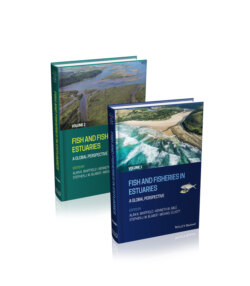Читать книгу Fish and Fisheries in Estuaries - Группа авторов - Страница 79
3.5.5 Estuary contaminants: water quality degradation
ОглавлениеContaminants and toxins are frequent components of estuarine waters, especially where the surrounding watershed is extensively developed or industrialised (Lawrence & Hemingway 2003, Day et al. 2013, Weis 2014). Still, we often have poor understanding of contaminant effects on estuarine fish reproduction and recruitment. Potential contaminants are diverse and can include those known for decades, e.g. metals, petroleum hydrocarbons, pesticides, industrial chemicals, nutrients and sewage (Weis 2014). Other contaminants are only recently recognised, for example endocrine disruptors that can influence sex determination (Rochman et al. 2014) and microplastics (Oliveira et al. 2013, Rochman et al. 2013, Critchell et al. 2019) that may impact reproduction or recruitment. Research currently underway in South African surf zones shows extensive consumption of microplastics by an estuary‐associated mugilid Chelon richardsonii. Its larval stage feeding in surf zones is at risk for high consumption of microplastics entrained in rip channels (McGregor & Strydom 2020).
One exception to our limited knowledge of contaminant effects on estuarine‐occurring fishes is that for the fundulid Fundulus heteroclitus, which has been well studied in laboratory research. Exposure to mercury causes reduced fertilisation success (Khan & Weis 1987a, 1987b), embryonic deformities (Weis & Weis 1977a, 1977b) and reduced larval swimming and feeding ability (Zhou et al. 2001). Mercury also causes reduced predator avoidance by the larvae (Zhou & Weis 1998) and diminished prey capture ability by juveniles (Smith & Weis 1997). The accumulated evidence indicates that contaminated nursery sites contribute to reduced recruitment of this common species because of higher mortality in early‐life stages, slower growth and reduced condition and longevity (Weis et al. 2001). In an urbanised estuarine nursery area in South Africa, it was shown that select species of juvenile fishes, including mugilids, targeted by fishers for consumption, were already contaminated with cadmium and other metals. The long‐term effects of heavy metal contamination on reproductive biology of estuary‐occurring species are relatively poorly understood worldwide and need to become a focus in the Anthropocene.
Acidification of estuaries and coastal waters is an emerging threat to reproduction and recruitment of estuary‐associated fishes (Wallace et al. 2014). Acidification and its impacts on reproduction of anadromous fishes on the east coast of North America and in tributaries of the Baltic were identified as a substantial threat (Hall 1987, Hendrey 1987, Urho et al. 1990).
